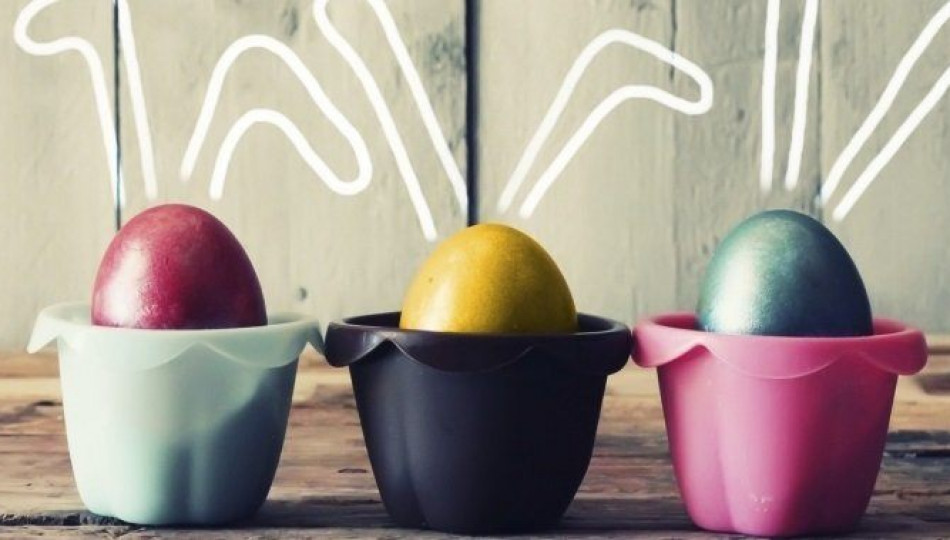Easter customs in Poland

Editorial Team

related articles
General symbol of Easter (all over the world) is an egg, which symbolizes new life – resurrection. Here are not only chocolate eggs or boiled eggs. In Poland we also have egg decorations called ‘pisanki’. These eggshells covered with colorful paintings and ornaments originate from a long standing tradition. Although usually children like to decorate them, there are also many artists who create those little works of art professionally – it is called writing eggs and hence the name ‘pisanka’ (from pol. pisać – to write). Thanks to the fact that the eggs are empty, they can be saved for the next year unless they break, as shells are very delicate. In Poland pisanki are to Easter what baubles are to Christmas.
Traditions
Easter is a feast lasting more than a week. Preparations start on Palm Sunday – a week before Great Sunday. On Palm Sunday people attend churches carrying colorful palms in memory of Jesus Christ entering Jerusalem on a donkey. It was the last time when he received warm greetings. Five days later – on Friday – he was unfairly judged and brutally murdered. Since Monday – the Great Week begins. Below traditions associated with specific days were described. At this time it is appropriate to resist from attending loud parties.
Great Thursday
It is also rather sad. Over 2000 years ago Jesus had The Last Supper with his Apostles and then was praying in the Garden of Gethsemane before his execution. Almost everyone goes to a very official mass, which is in the evening and memorizes The Last Supper and establishment of two sacraments – Priesthood and Eucharist.
Great Friday
On Friday there is no mass and everyone restrains from eating more than 3 meals a day or eating meat or sweets. It is a time of reflection, inception and focus. Generally the atmosphere is rather overwhelming although the weather outside is usually beautiful.
Great Saturday
On Saturday everyone awaits symbolic resurrection, so there is a common enthusiastic preparation for Sunday. Today there is no mass, children however take baskets made of wicker to the Church to be blessed. The baskets contain food to be eaten for breakfast on Easter Sunday. The contents of the basket have strictly symbolic meaning. Sausage symbolizes wealth, fertility and wellbeing. Salt due to its conservational properties stands for protection from deterioration and evil. Egg is a symbol of a new life, while bread embodies Jesus Christ and is a basic food guaranteeing survival and peace. Children also decorate their baskets with fresh flowers. It is a particularly fetching tradition.
In the evening (or on the Sunday morning before the dawn) there is a mass called Resurrection, which aims to preach resurrection of Jesus Christ. It is the most important mass in the Catholic Church throughout the year, because it constitutes a symbolic line – Catholics believe that before the Christ’s ordeal, death and resurrection people have lived under the burden of their sins. Now people know that God loves them so much, that he has given his Son to protect them from the evil. Easter is celebrated every year as a commemoration of this fact. The Resurrection Mass is often combined with procession to symbolically let the world know what has just happened.
Great Sunday
Today the entire family celebrates the breakfast together. They first consume food blessed the day before. Then they savor themselves with white sausage, Hunters’ Stew or potato salad. Formerly those types of heavy dishes were eaten in the morning of Great Sunday, because everyone was starving after 40-days Lent. In this day and age people rarely keep strict consumption restrains, so dishes served at the breakfast have rather traditional than practical character. Afterwards children tend to receive presents from the Easter Bunny. Those are usually sweets. Western tradition of hiding the presents in the garden or at home and making children search for them is gaining popularity in Poland. There is also another traditional Easter play called beating eggs. Two people take one egg each and rap. The one whose egg crashes first looses the game. The atmosphere is amazing as everyone is optimistic and there is a lot of hope in the air.
Wet Monday
It has a rather informal character. The tradition is to make everyone wet on that day…and what might be found surprising – not only children run around with water guns! Simply watch out, because no one shall feel dry today. Formerly this tradition had also a romantic overtone meaning that boys were dousing with water those girls whom they especially liked.
Food that can be found on every table at breakfast:
Żurek – sour rye soup cooked with sausage and eaten with boiled eggs. It has a white color.
Bigos – otherwise called Polish Hunters’ Stew. It is a cabbage cooked with onion, tomatoes and meat. Characteristic for this dish is that the older it is the better it tastes.
White sausage – it is made of pork meat and baked in the oven.
Potato salad – all men are hired by their wives to chop ingredients for this salad: cooked potatoes, carrots, sour cucumbers, celeries and apples. Those are then mixed with peas and mayonnaise. Every house prepares a different variation of this salad. Some add corn for example.
Eggs in various forms are present on the table, as egg is the symbol of Easter. One can find: eggs with mayonnaise, stuffed, with raw meat, with salmon, with vegetables or with paste as well as many other varieties.
Mazurek – crispy, fatty, flat cake covered with all types of creams (chocolate, caramel, halvah, peanut butter), dried fruits and nuts which are arranged in beautiful patterns and ornaments. Some can be really called a piece of art. Name of the cake is similar to Polish traditional dance – Mazur.
Babka – powdery cake baked in a special form which gives it the shape of a huge pudding. It is usually covered with chocolate. This is a very easily modifiable cake – some people add chocolate or cocoa powder to the inside, others add dried fruits or lemon or make it have two colors.
Pascha – it is a Russian and Ukrainian dish present often on polish tables during Easter. It is made of white cheese, milk, cream and butter with eggs, vanilla and dried fruits
Public life
Although not as pompous as before Christmas, one can find Easter decorations in shops and malls. Sweet producers offer chocolate eggs and all varieties of dedicated Easter sweets (for example marzipan in Easter wrapping). However, as mentioned earlier, Easter time equals family time. Offices, shops and companies are closed on Sunday and Monday. There is little business done then, however there are some cultural events worth paying attention to.
In Warsaw there is a yearly Ludwig van Beethoven Classical Music Festival. It is organized in Polish National Philharmonic in cooperation with foreign embassies. Some concerts also take place in the Kings’ Castle. The Festival hosts various talented and prominent artists from all over the world performing beautiful classical pieces. It lasts two weeks and is a music event of the highest quality.
For fans of more casual entertainment Kraków organizes yearly Eastern fair. Retailers and craftsmen from Europe present items connected with Easter traditions. One can purchase charming fripperies and try some regional viands as well as take part in social festivities and attractions.
Taking advantage of sunny spring weather many people do sports in breaks between sitting at the table. There are numerous walkers, bikers and joggers.












